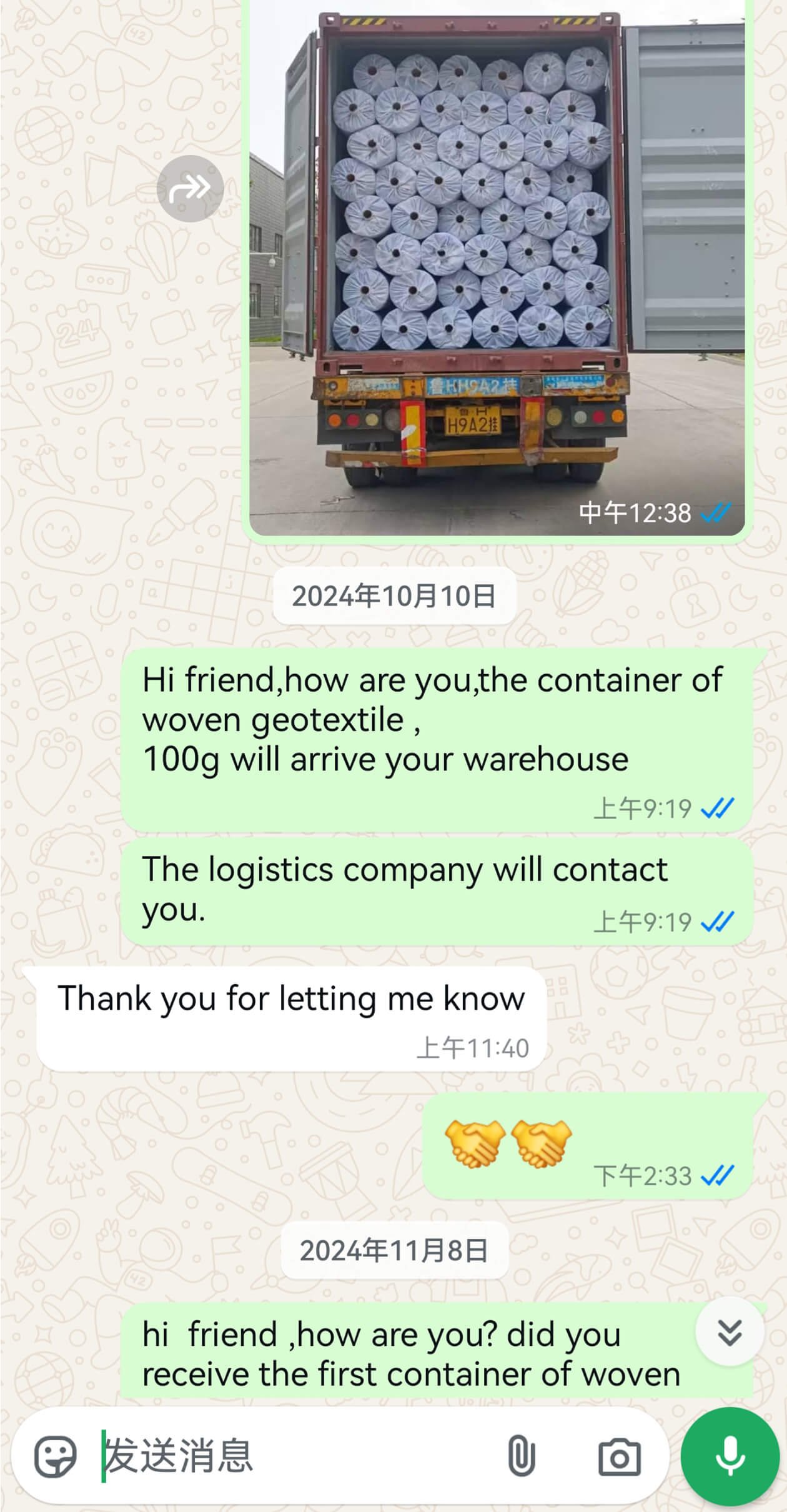The most obvious benefit of using weed barrier fabric is its ability to suppress weed growth. By blocking the sunlight, the fabric prevents weed seeds from germinating and existing weeds from photosynthesizing. This means that you’ll spend less time pulling weeds and more time enjoying your garden.
Material: High-quality polypropylene (PP) or polyester fabric
UV Resistance: Excellent resistance to UV rays, ensuring durability for long-term outdoor use
Weed Suppression: Prevents weed growth while allowing air, water, and nutrients to pass through to the soil
Eco-Friendly: Chemical-free solution, safe for the environment, pets, and plants
Customization: Available in various widths, lengths, and roll sizes to suit any project
Certifications: ISO 9001, CE, SGS – Compliant with global standards for quality and performance
Contact us now to get more detailed information and quotes about weed mat!
Weed mat, also known as landscape fabric, is a specially designed material that is used to suppress weed growth. It is typically made from synthetic fibers such as polypropylene or polyester, which are woven or non-woven together to create a durable and permeable fabric. The fabric allows water and air to penetrate through to the soil, while blocking the sunlight that weeds need to germinate and grow.
Home Gardens – Keep your flower beds, vegetable gardens, and lawns weed-free naturally
Landscaping Projects – Ideal for mulching, rock beds, and soil stabilization
Agricultural Use – Prevent weed growth in fields, orchards, and vineyards
Commercial & Industrial Landscaping – Protect large landscaping areas such as parks, roadsides, and public spaces
Erosion Control – Ideal for areas prone to soil erosion or under heavy rainfall
Our weed mat for gardens provides superior weed suppression by blocking sunlight and preventing weeds from germinating. It allows your plants to thrive while protecting them from unwanted growth, without the need for harmful herbicides or pesticides.
Crafted from high-strength polypropylene or polyester, our weed barrier fabric is designed to withstand harsh environmental conditions. UV resistance ensures that it will not break down or lose effectiveness under direct sunlight, providing reliable protection year after year.
While preventing weeds, the fabric allows for proper water drainage and airflow to the soil, helping maintain healthy root systems. This ensures that your plants receive the necessary nutrients and moisture without being obstructed by weed growth.
Our weed mat is easy to install, lightweight, and flexible, making it suitable for a wide range of garden applications. Whether you’re installing it around flower beds, vegetable gardens, or under shrubs, it adapts to any shape or size, providing reliable weed control throughout the growing season.


As an experienced and professional supplier, our products have been exported to more than 50 countries and regions, such as the United States, Canada, Mexico and so on.
The products include PP biaxial geogrids, PE and PP uniaxial geogrids, polyester geogrids, fiberglass geogrids, basalt geogrids, geotextiles, geomembranes, geonets, safety fences, erosion control geogrids, and geosynthetic composite material products.


Geomaterial testing equipment is mainly used to test the physical, mechanical, hydraulic and durability properties of geosynthetics. Among them, geotextile testing equipment is used to test the permeability, cone resistance, surface opening size and thickness of geotextiles. The geomembrane test equipment is used to test geosynthetics thickness tester, direct shear/tensile test system, creep test system, etc. There are also geosynthetic liner (GCL) test equipment, and geotextile/PVD test equipment.




Elevate your projects with our industry-leading geotextile solutions. Connect with us today and experience the difference of working with a truly professional geotextile supplier.






Geotechnical materials are various artificial synthetic materials used in civil engineering together with soil, rock or other materials. They mainly include geotextiles, geomembranes, geonets, geogrids, etc., which are used to prevent soil loss, strengthen soil structure, control water flow and other purposes.
Regular inspection for damage or aging. Make sure that the seams of geotextiles and membranes are not loose or broken.
Remove debris from the material to maintain its normal function.
The life of geotextiles is affected by many factors, including material type, environmental conditions and usage. Generally speaking, high-quality geotextiles can be used for 10 to 50 years, or even longer, but they need regular inspection and maintenance.
Most geotextiles are environmentally friendly because they can be recycled or reused. Some materials, such as geomembranes, may require special treatment after long-term use, but overall they have a positive effect on the environment in improving soil stability and reducing soil erosion.
The installation method of geotextiles varies according to the type of material and the application area. General steps include:
The price of geotextiles will vary according to factors such as type, specification, quality and purchase quantity. Generally speaking, the price of geotextiles and geomembranes will be affected by the material (such as polyester, polypropylene, etc.) and thickness. Please consult the supplier for specific prices.
Partner with a leading geosynthetics manufacturer to enhance your infrastructure projects. Contact us today for a customized solution tailored to your needs. Get a quote now and experience the next level of soil reinforcement!


© 2012-2025 © Taian Lin Yuan Engineering Materials Co.,Ltd. All rights reserved.
WhatsApp us